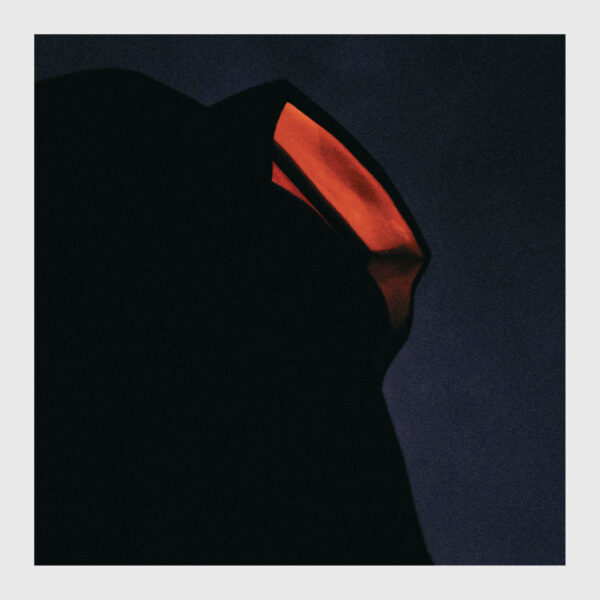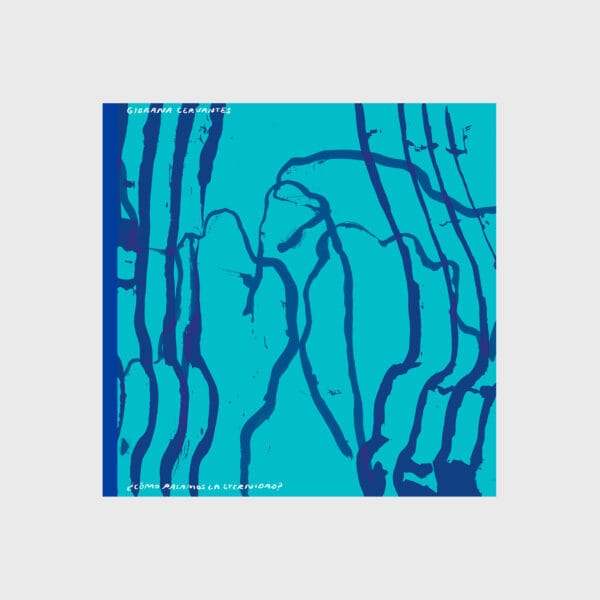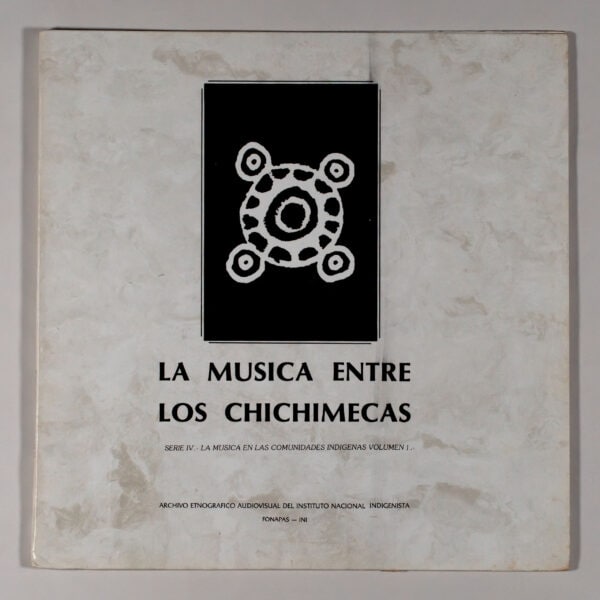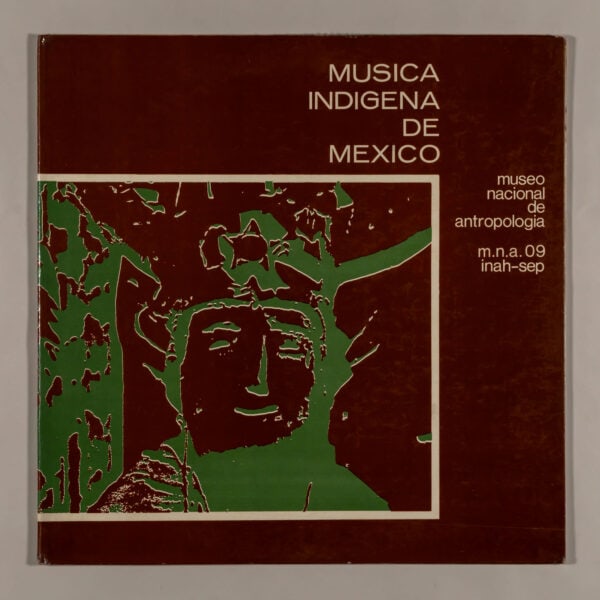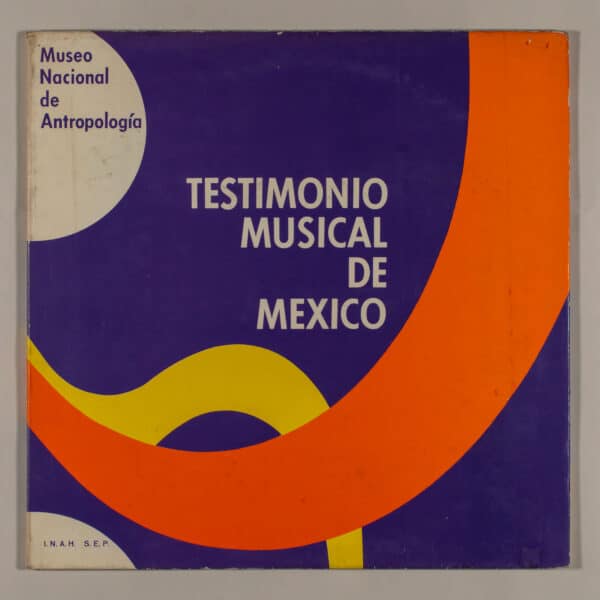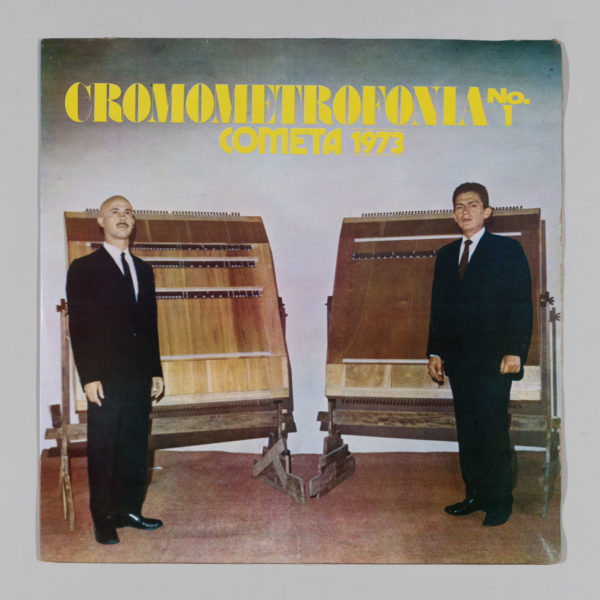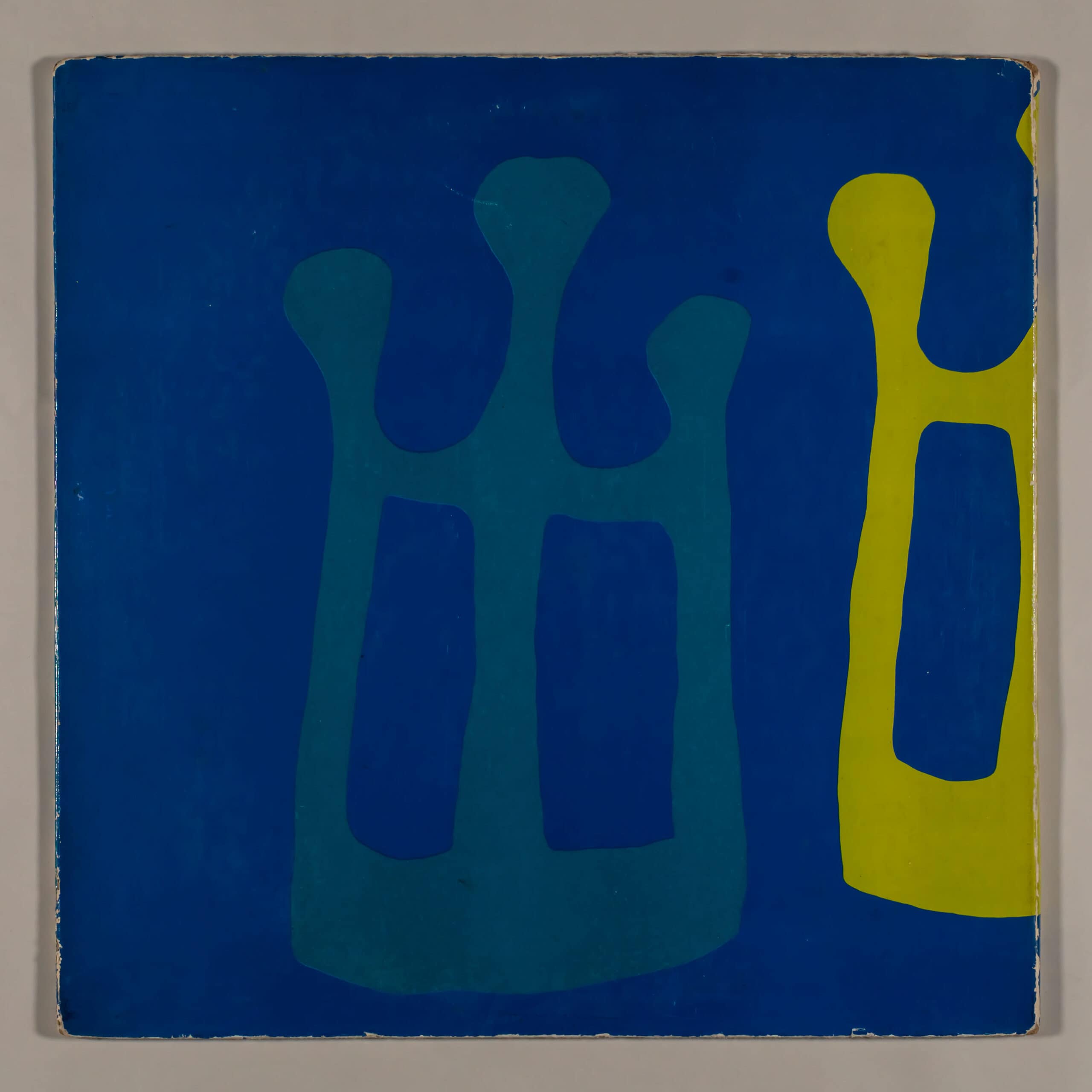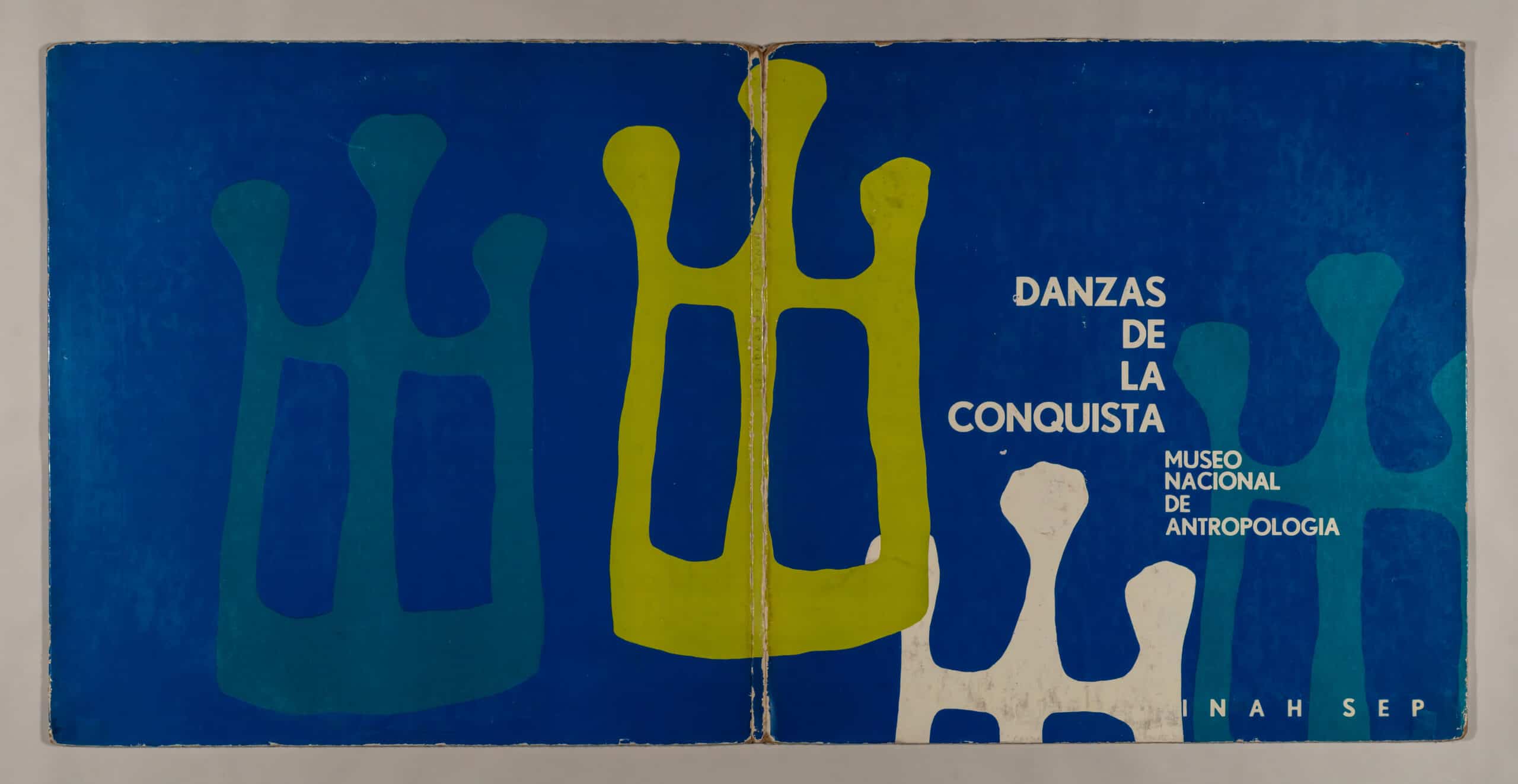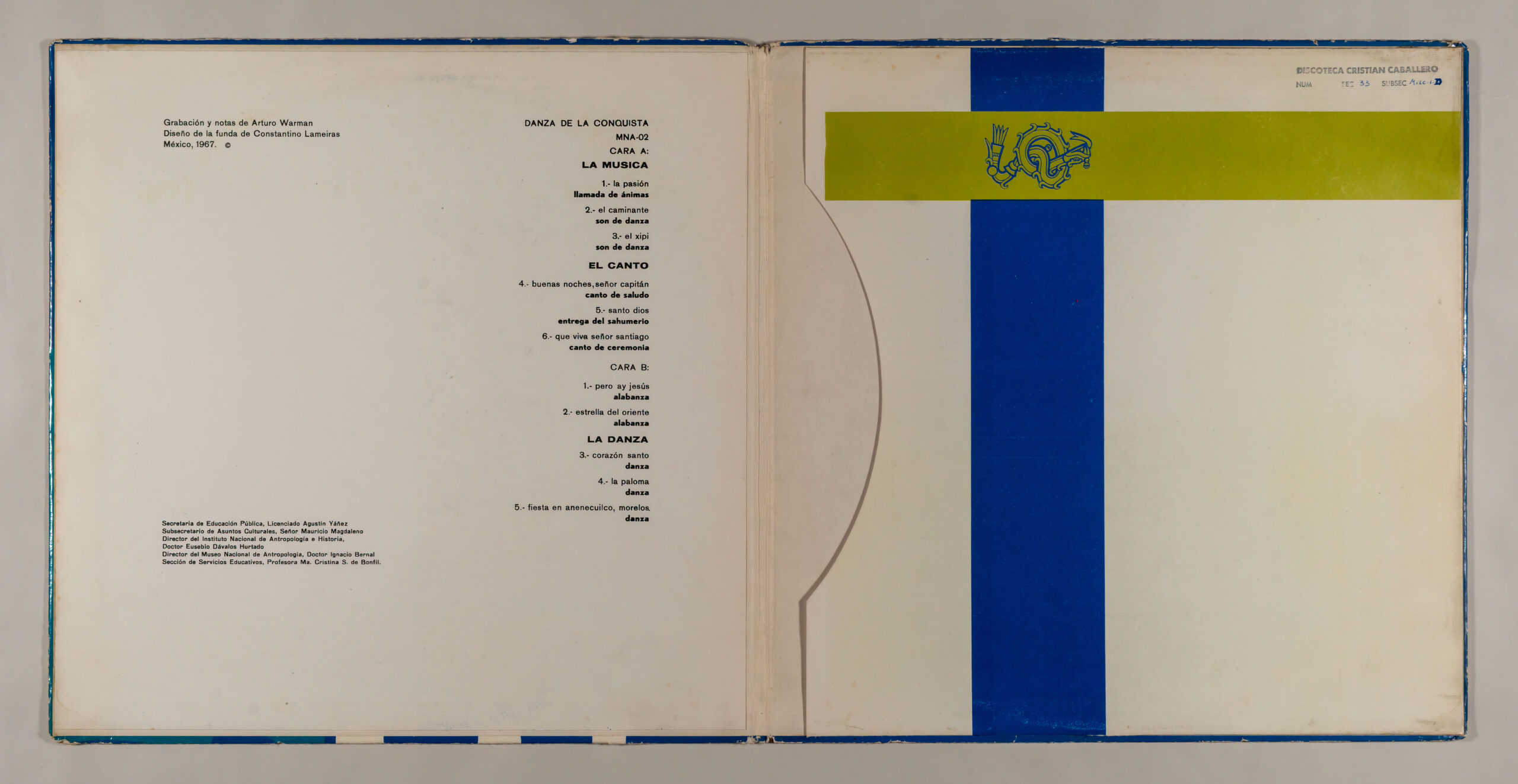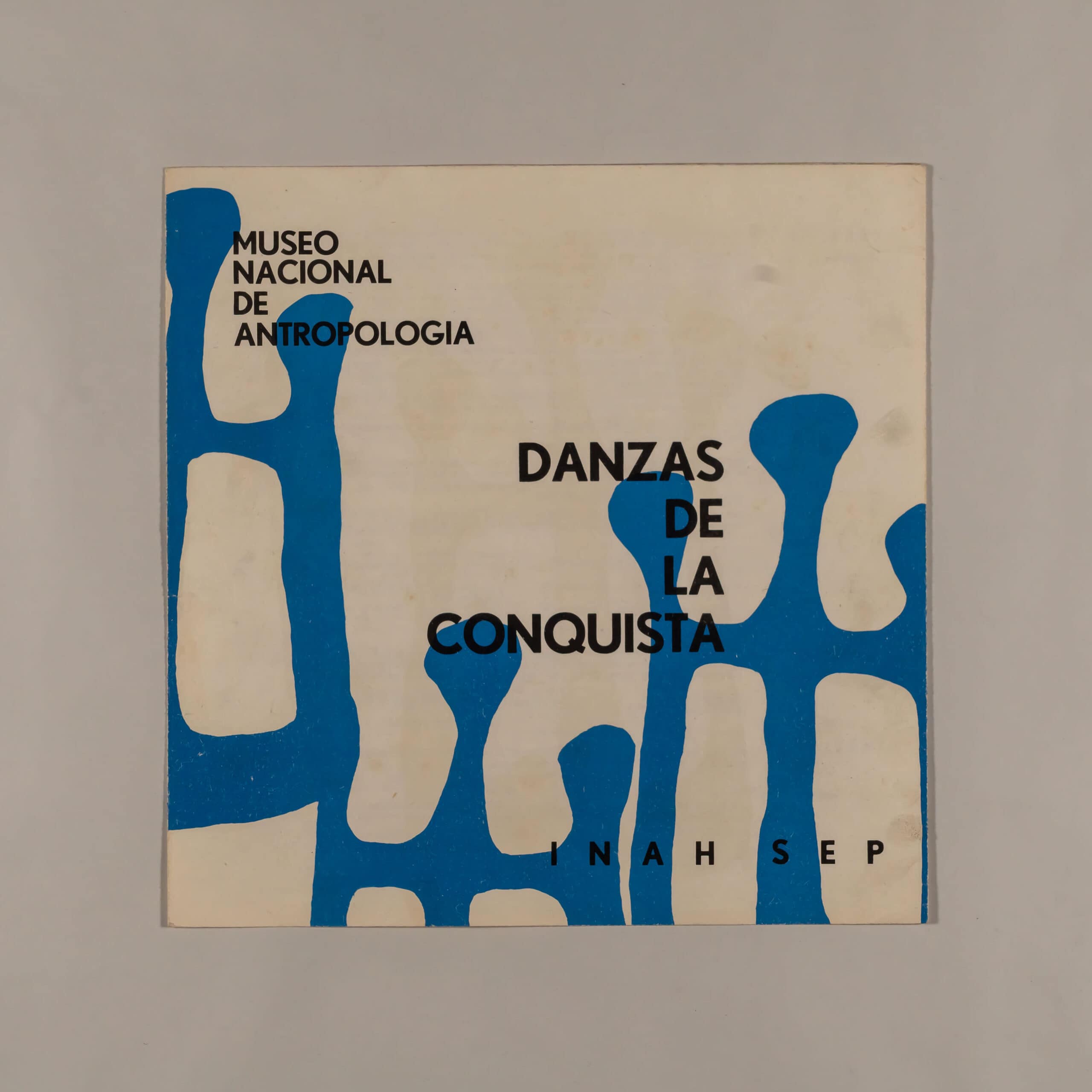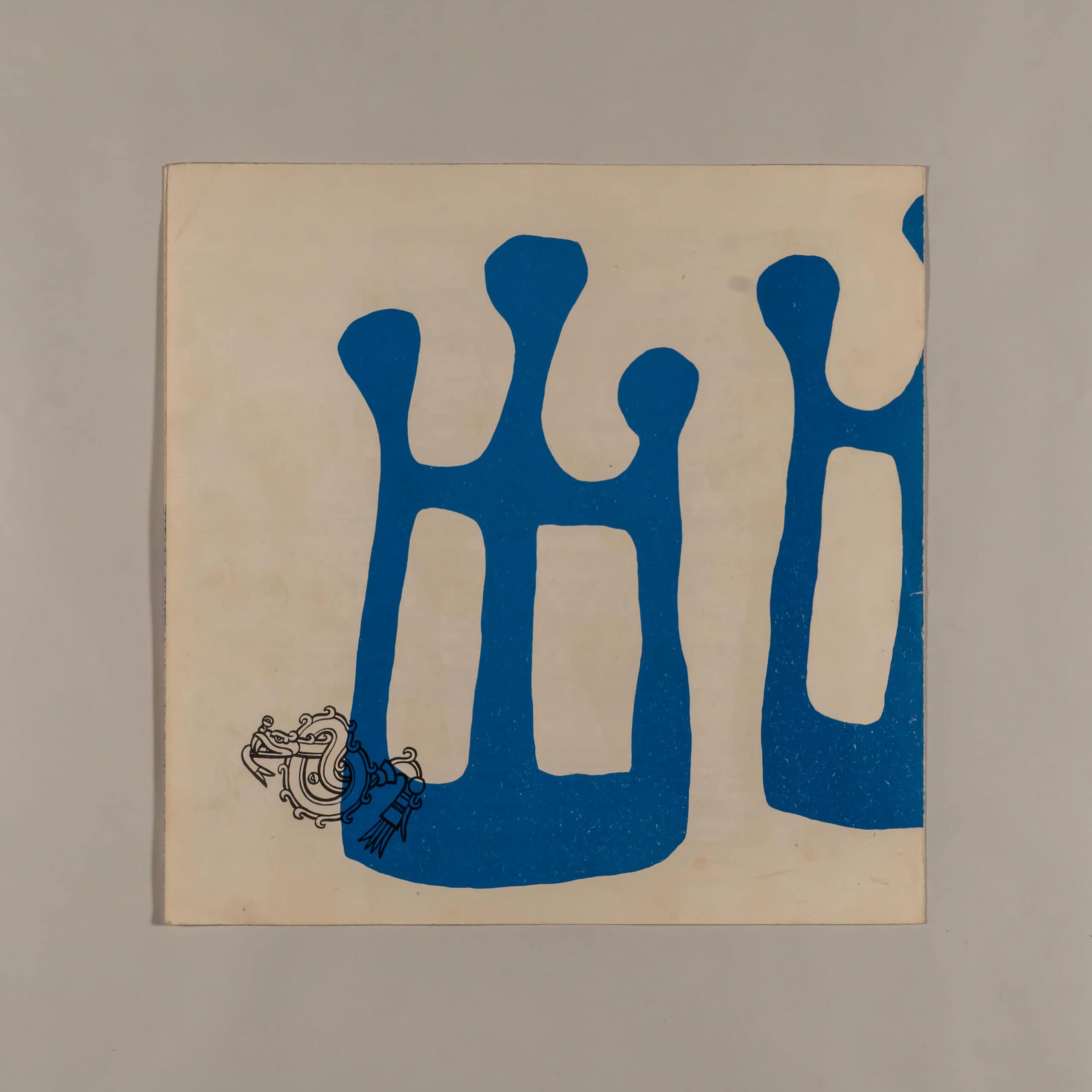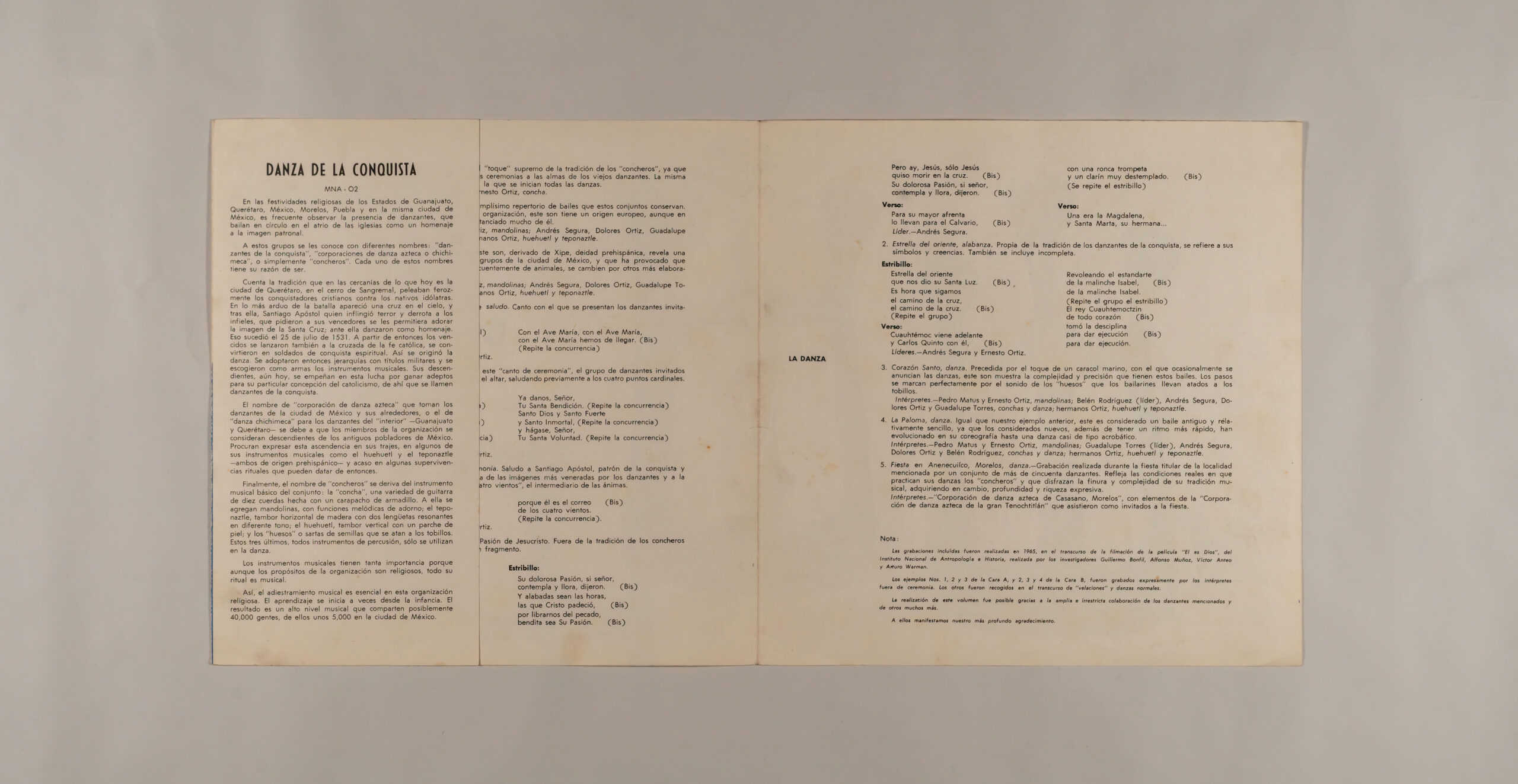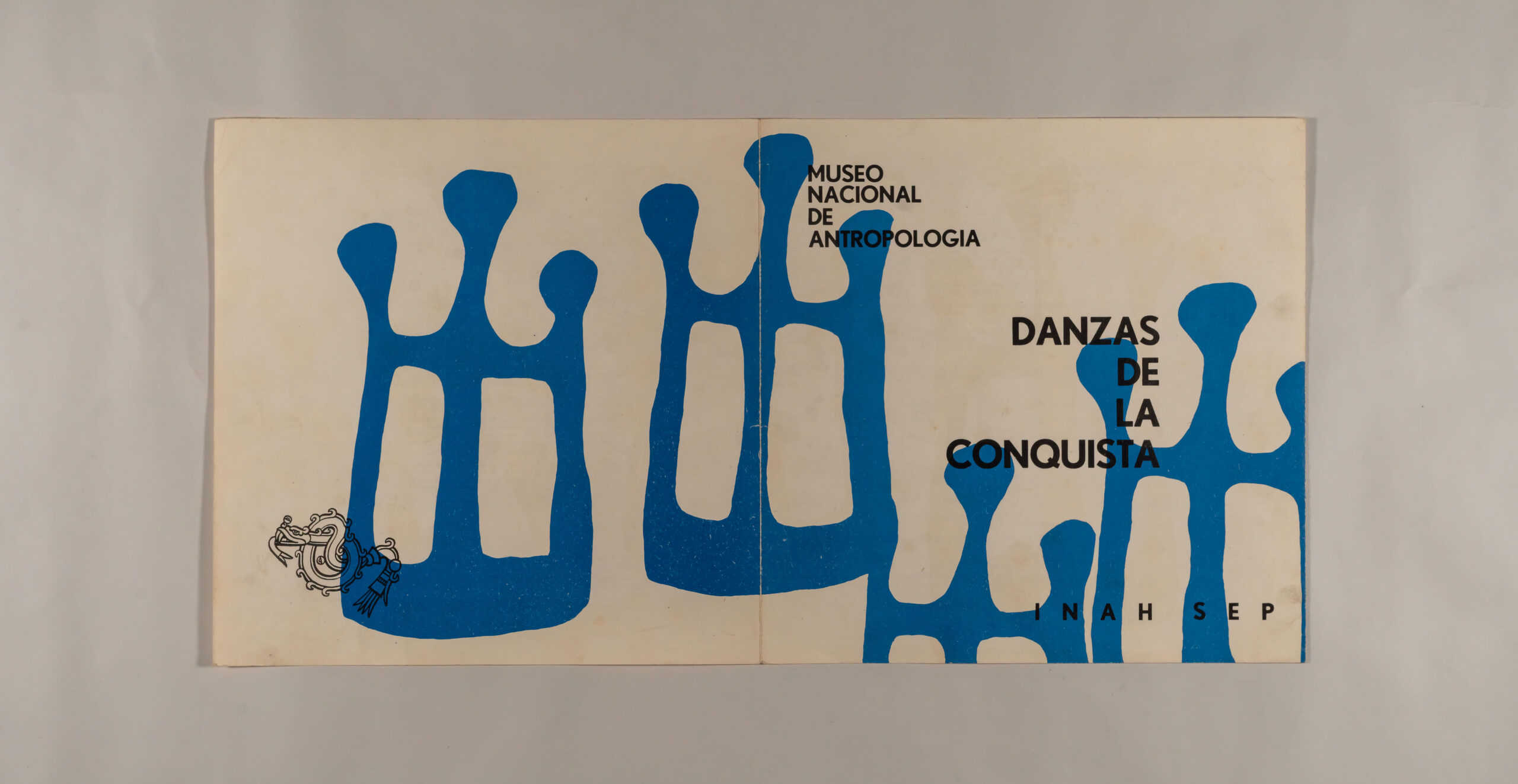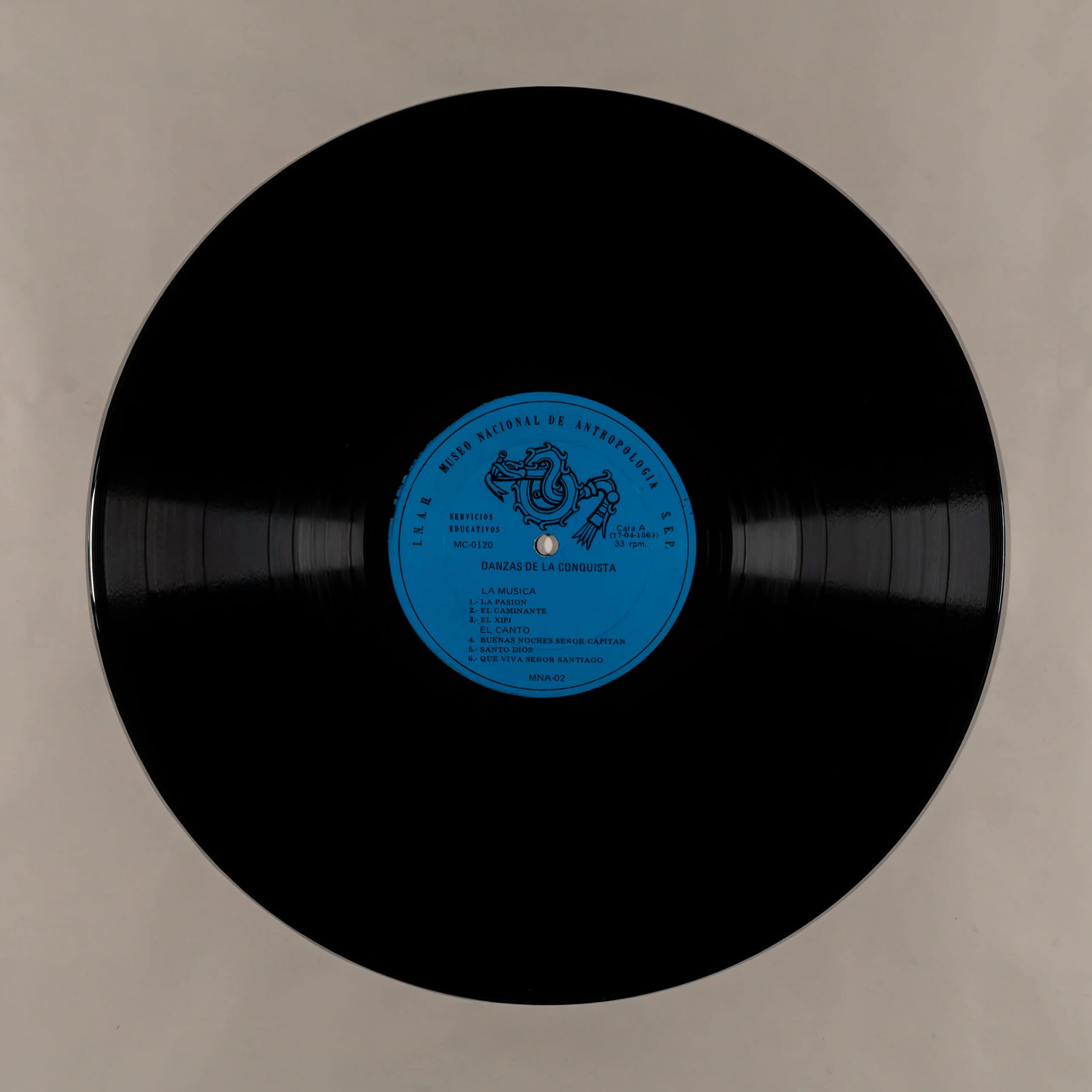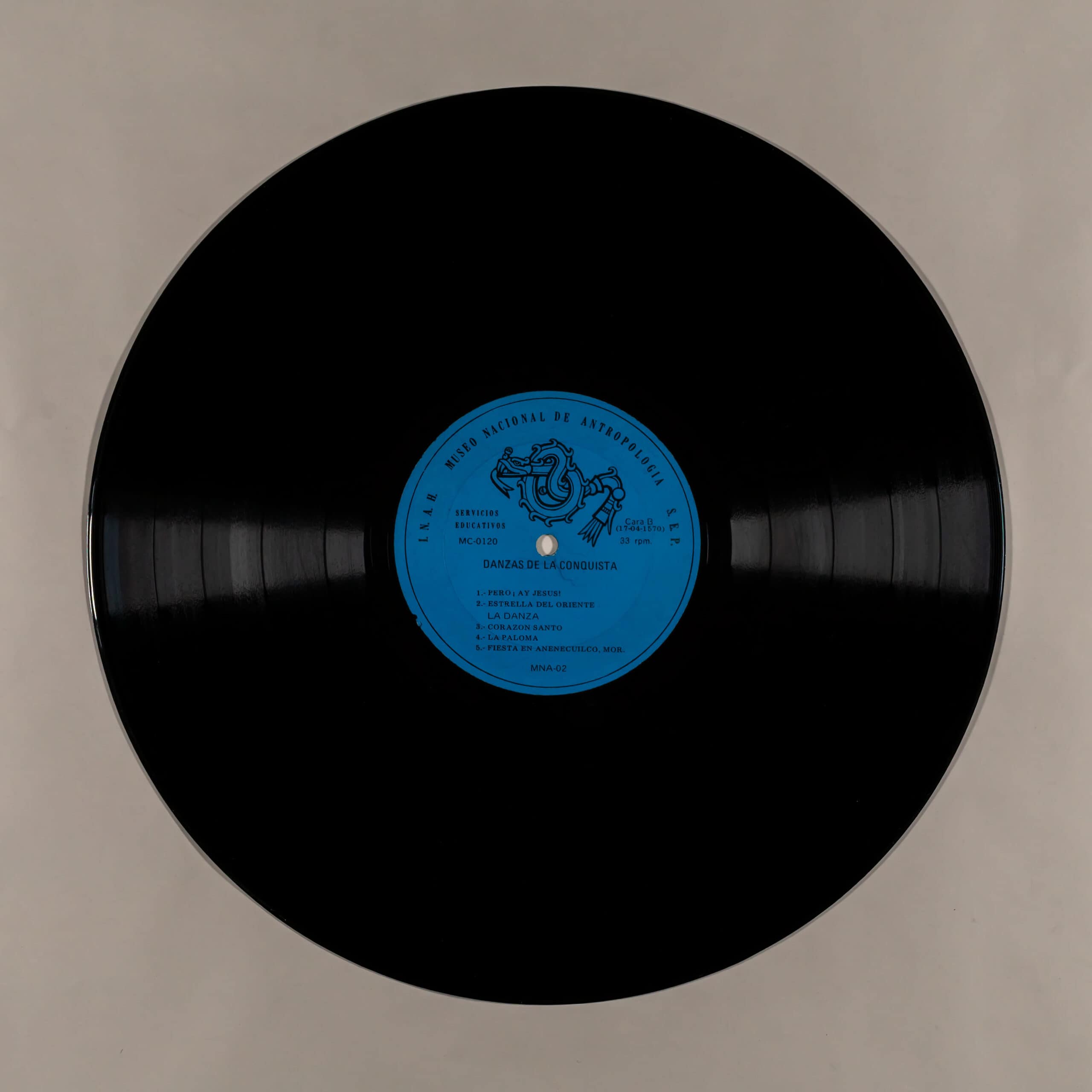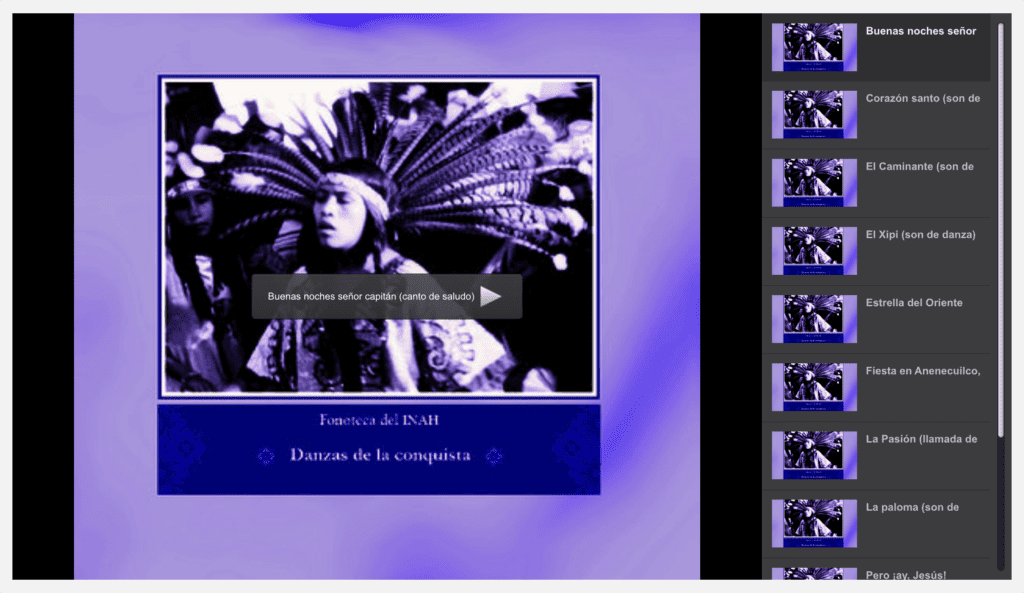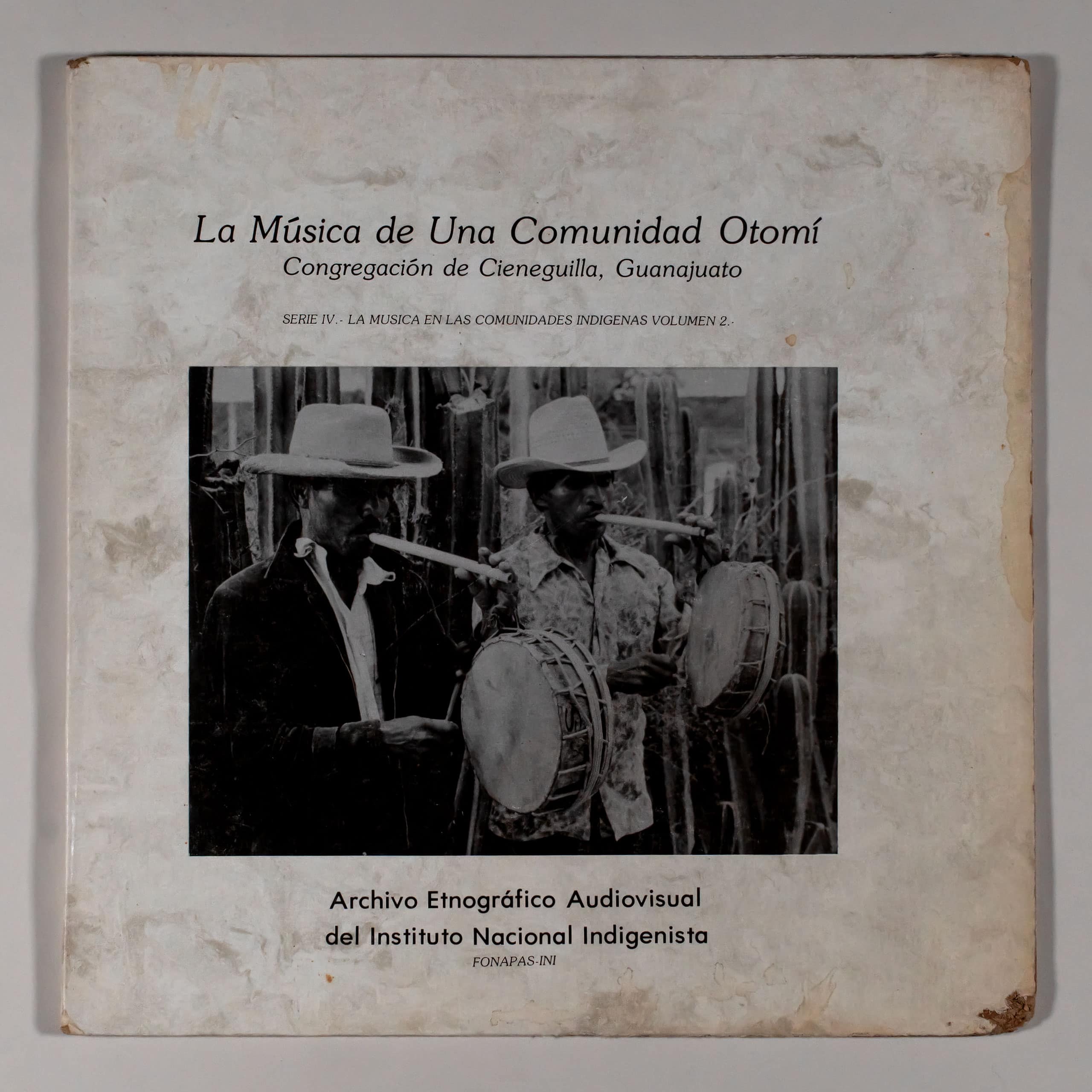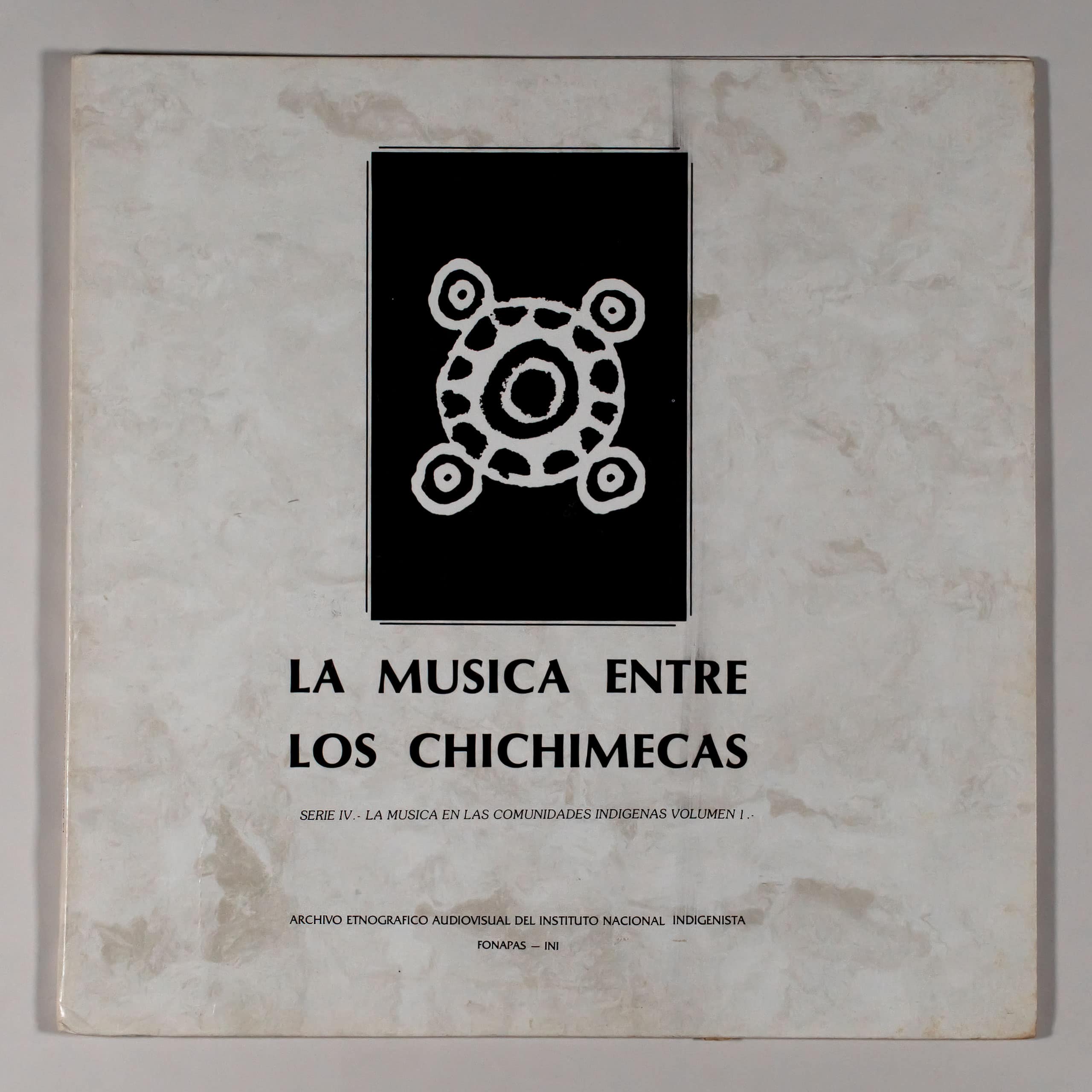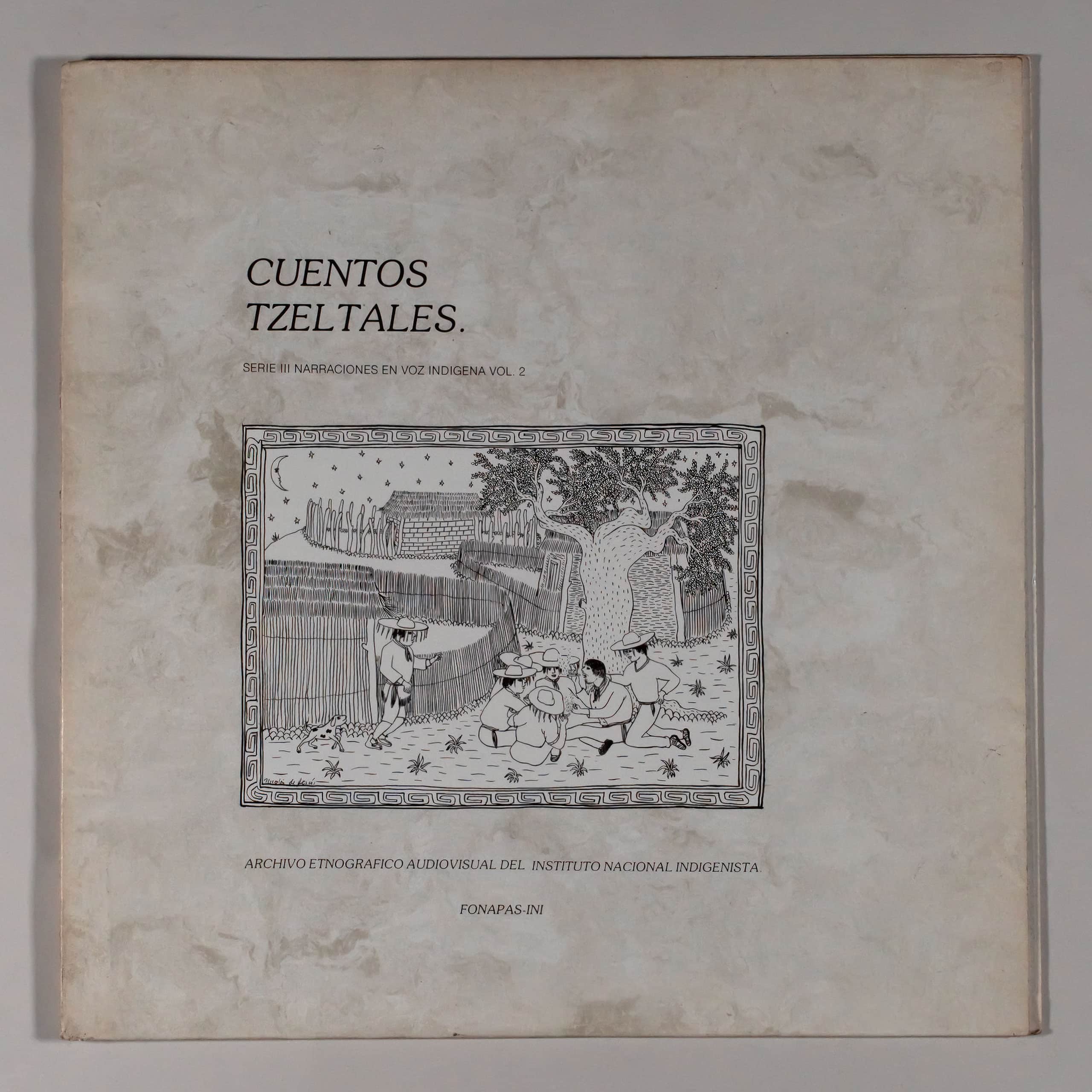DANCES OF CONQUEST
INAH SEP
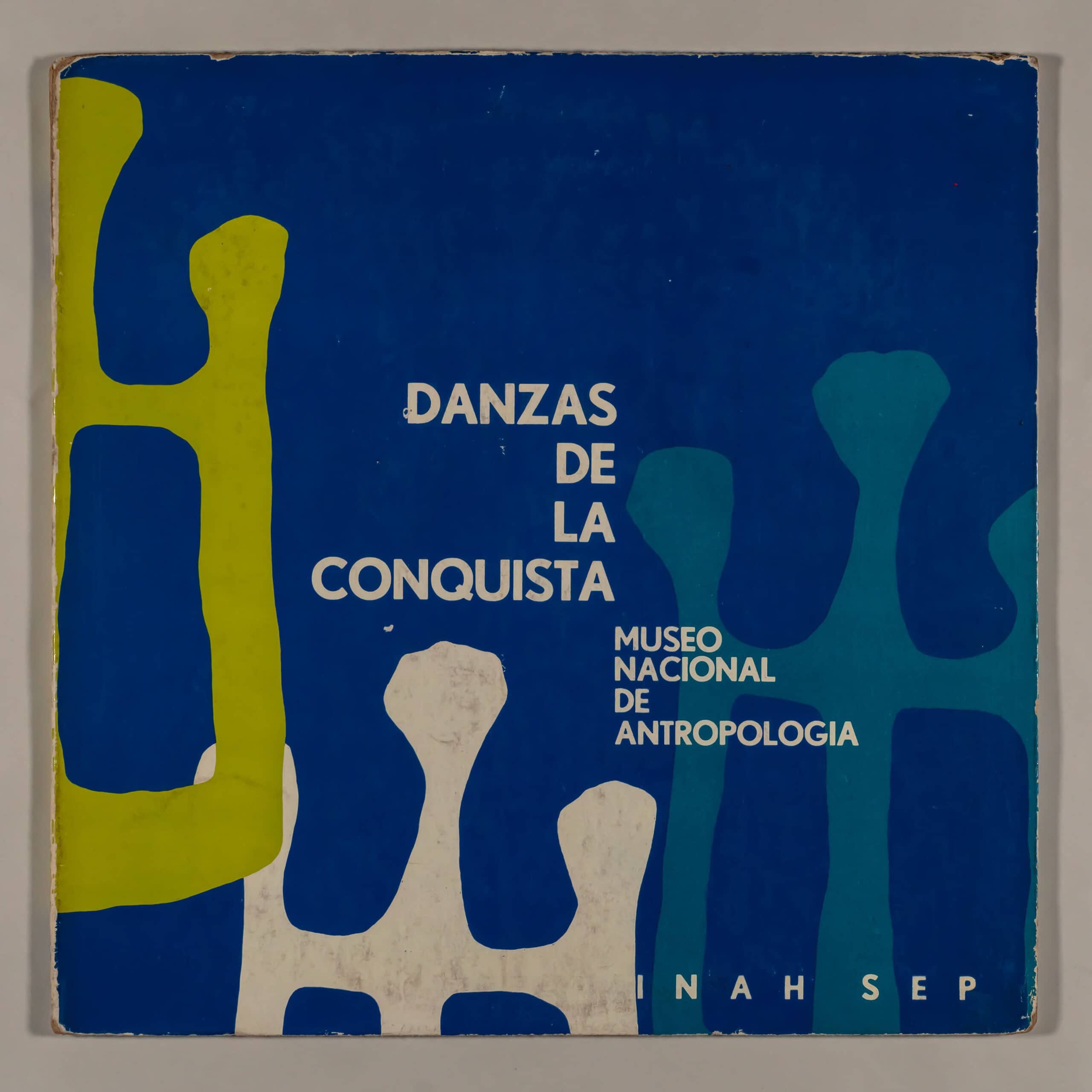
|
Label: INAH-SEP MNA-02 Released: 1967 |
Country: Mexico |
Info:
ANTHROPOLOGY NATIONAL MUSEUM
DANCES OF CONQUEST
MNA – 02
INAH-SEP
Notes by Arthur Warman.
Rights reserved by the National Museum of Anthropology, Mexico, 1968
Distribution: Educational Services Section
Anthropology National Museum
De la Milla Street, Bosque de Chapultepec
México, D. F.
In the religious festivities of the States of Guanajuato, Querétaro, Mexico, Morelos, Puebla and in Mexico City itself, it is common to observe the presence of dancers, who dance in a circle in the atrium of the churches as a tribute to the patron image .
These groups are known by different names: “conquest dancers”, “Aztec or Chichimeca dance corporations”, or simply “concheros”. Each of these names has its reason for being.
Tradition has it that in the vicinity of what is now the city of Querétaro, on the Sangremal hill, the Christian conquerors fought fiercely against the idolatrous natives. At the height of the battle, a cross appeared in the sky, and behind it, Santiago Apóstol, who inflicted terror and defeat on the infidels, who asked their victors to be allowed to worship the image of the Holy Cross; Before her they danced in homage. That happened on July 25, 1531. From then on, the vanquished also launched themselves into the crusade of the Catholic faith, they poured into soldiers of spiritual conquest. Thus the dance originated. Hierarchies with military titles were then adopted and musical instruments were chosen as weapons. Their descendants, even today, are engaged in this struggle to win followers for their particular conception of Catholicism, hence they are called dancers of the conquest.
The name “Aztec dance corporation” taken by the dancers of Mexico City and its surroundings, or “Chichimeca dance” for the dancers of the “interior” –Guanajuato and Querétaro– is due to the fact that the members of the organization they consider themselves descendants of the ancient settlers of Mexico. They try to express this ancestry in their costumes, in some of their musical instruments such as the huehuetl and the teponastle –both of pre-Hispanic origin– and perhaps in some ritual survivals that may date from then.
Finally, the name “concheros” derives from the group’s basic musical instrument: the “concha”, a variety of ten-string guitar made from an armadillo carapace. Mandolins are added to it, with melodic adornment functions; the teponastle, a horizontal wooden drum with two resonant reeds in different pitches; the huehuetl, a vertical drum with a skin head; and the “bones” or strings of seeds that are tied to the ankles. These last three, all percussion instruments, are only used in dance.
Musical instruments are so important because although the purposes of the organization are religious, all of its ritual is musical.
Thus, musical training is essential in this religious organization. Learning sometimes starts from childhood. The result is a high level of music that is shared by possibly 40,000 people, some 5,000 of them in Mexico City.
Music is used in two main types of ceremonies: the “vigil” and the “dance”.
The “vigil” is a private ceremony, reserved for the members of the group, occasionally a few guests. It is celebrated at night, almost always in the house where the altar is kept and with it, homage is paid to the saints of the Catholic pantheon and to the “conquering souls”, the spirits of the old dead shellmen who protect their spiritual descendants.
The ceremony varies according to the reason for the celebration. Music and singing are used in all “vigils” that can be grouped into three categories: “ceremony songs” that are sung at specific times and for designated purposes, such as greeting the audience and the images, “asking for permission” , say goodbye, etc.; the “ceremonial touches” without singing, such as the “call of souls” to request the presence of the protectors at the culminating moment of the ceremony; and the “praises”, songs of adoration that narrate events of the Catholic tradition of the group and that are sung by one or two leaders while the audience repeats only the refrain.
The “dance” is the public ceremony that each group performs at least four times during the year. These are the “obligations” in which four important sanctuaries must be attended, located at “the four winds” or cardinal points, of which Chalma and Villa de Guadalupe are the main ones. The ceremony begins with the “petition for permission”, a song performed by the dancers in front of the main altar of the temple; then they form a circle in the atrium and after tracing a cross with their foot, the first dance begins. Each dance is “led” by a leader who performs the traditional steps and is repeated by the others. At the end of the day, the dancers return to the altar and sing “thank you” and “farewell.” For these ceremonies, the members of the groups adorn themselves with pre-Hispanic-inspired clothing and are crowned with graceful plumes.
The grouping of the material that we present has been based on what has been briefly described:
FACE: A
MUSIC
1. The passion, call of souls. Perhaps the supreme “touch” of the “concheros” tradition, since it has the virtue of making the souls of the old dancers present in the ceremonies. The same melody is used to “make the cross” with which all dances begin.
Performers.–Pedro Matus, mandolin, Ernesto Ortiz, shell.
2. The walker, are dance. Part of the vast repertoire of dances that these ensembles preserve. Like all the musical tradition of this organization, this son has a European origin, although in its contemporary versions it has distanced itself a lot from it.
Performers.–Pedro Matus and Ernesto Ortiz, mandolins; Andrés Segura, Dolores Ortiz, Guadalupe Torres and Belén Rodríguez, shells; Ortiz brothers, Huehuetl and Teponastle.
3. The xipi, are dance. The name of this son, derived from Xipe, a pre-Hispanic deity, reveals a Mexicanist influence that the groups of Mexico City resent, and that has caused the old names of the sons, frequently of animals, to be changed for more elaborate ones and of historical content.
Performers.–Pedro Matus and Ernesto Ortiz, mandolins; Andrés Segura, Dolores Ortiz, Guadalupe Torres and Belén Rodríguez, shells; Ortiz brothers, Huehuetl and Teponastle.
THE SINGING
4. Good evening, Mr. Captain, greeting song. Song with which the dancers invited to a ceremony present themselves.
Good evening, Mr. Captain, (or General)
of this conformity. (Bis)
With the Ave Maria, with the Ave Maria,
with the Ave Maria we have to arrive. (Bis)
(Repeat the turnout)
Leaders: Ernesto Ortiz and María T. de Ortiz.
5. Good God, delivery of the incense. With this “ceremony song”, the group of invited dancers offers the incense burner they carried before the altar, previously greeting the four cardinal points.
Holy God and Holy Mighty One,
and Holy Immortal, (Repeat the audience)
Deliver us, Lord, oh,
of all evil, (Repeat the audience)
and let it be done, Lord,
Your Holy Will. (Repeat the turnout)
Give us, Lord,
Your Holy Blessing. (Repeat the turnout)
Holy God and Holy Might
and Holy Immortal, (Repeat the audience)
and let it be done, Lord,
Your Holy Will. (Repeat the turnout)
Leaders.–Ernesto Ortiz and María T. de Ortiz.
6. Long live Mr. Santiago, ceremonial song. I greet Santiago Apóstol, patron saint of the conquest and winner of the battle of Sangremal, one of the most venerated images by dancers and who is attributed to be the “mail of the four winds”, the intermediary of the souls.
Long live and long live
Mr. Santiago, (Bis)
because he is the mail (bis)
of the four winds.
(Repeat the turnout)
Leaders.–Ernesto Ortiz and María T. de Ortiz.
FACE: B
1. But oh, Jesus, praise. Based on the Passion of Jesus Christ. Outside the shell midden tradition, it has other variants. Only a snippet is included.
Verse:
A crown of thorns
that pierced her temples. (Bis)
The three Marys cried
to see the step they took. (Bis)
But oh, Jesus, only Jesus
He wanted to die on the cross. (Bis)
But oh, Jesus, only Jesus
He wanted to die on the cross. (Bis)
His painful Passion, yes sir,
behold and weep, they said. (Bis)
Chorus:
His painful Passion, yes sir,
behold and weep, they said. (Bis)
And praised be the hours,
those that Christ suffered, (Bis)
to free us from sin,
blessed be his Passion. (Bis)
with a hoarse trumpet
and a very intemperate bugle. (Bis)
(repeat chorus)
Verse:
To your greatest affront
They take him to Calvary, (Bis)
Verse:
One was the Magdalena,
and Santa Marta, her sister…
Leader.–Andrés Segura
2. Eastern star, praise. Typical of the tradition of the dancers of the conquest, she refers to their symbols and beliefs. Incomplete is also included.
Chorus:
Eastern star
who gave us the Holy Light from her. (Bis)
It’s time we move on
the way of the cross,
the way of the cross. (Bis)
(repeat group)
Verse:
Cuauhtemoc comes forward
and Carlos Quinto with him, (Bis),
Hovering the banner
of the malinche Isabel, (Bis)
of the wicked Isabel.
(The group repeats the chorus)
King Cuauhtemoctzin
with all my heart (bis)
took the discipline
to give execution (Bis)
to give execution.
Leader.–Andrés Segura and Ernesto Ortiz.
DANCE
3. Holy Heart, dance. Preceded by the touch of a sea snail, with which the dances are occasionally announced, this son shows the complexity and precision that these dances have. The steps are perfectly marked by the sound of the “bones” that the dancers wear tied to their ankles.
Performers.–Pedro Matus and Ernesto Ortiz, mandolins; Belén Rodríguez (leader), Andrés Segura, Dolores Ortiz and Guadalupe Torres, shells and dance; Ortiz brothers, Huehuetl and Teponaztle.
4. The Dove, dance. Like our previous example, this is considered an old and relatively simple dance, since those considered new, in addition to having a faster rhythm, have evolved in their choreography to an almost acrobatic type dance.
Performers.–Pedro Matus and Ernesto Ortiz, mandolins; Guadalupe Torres (leader), Andrés Segura, Dolores Ortiz and Belén Rodríguez, shells and dance; Ortiz brothers, Huehuetl and Teponaztle.
5. Party in Anenecuilco, Morelos, dance.–Recording made during the main party of the town mentioned by a group of more than fifty dancers. It reflects the real conditions in which the “concheros” practice their dances and that disguise the finesse and complexity of their musical tradition, acquiring instead, depth and expressive richness.
Performers.–”Aztec Dance Corporation of Casasano, Morelos”, with members of the “Aztec Dance Corporation of the Great Tenochtitlán” who attended the party as guests.
Note:
The recordings included were made in 1965, during the filming of the film “He is God”, of the National Institute of Anthropology and History, made by researchers Guillermo Bonfil, Alfonso Muñoz, Victor Anteo and Arturo Warman.
Examples Nos. 1, 2 and 3 of Side A, and 2, 3 and 4 of Side B, were expressly recorded by the performers outside of the ceremony. The others were collected in the course of “vigils” and normal dances.
The realization of this volume was possible thanks to the extensive and unrestricted collaboration of the aforementioned dancers and many others. We express our deepest gratitude to them.
Tracklist:
DANCES OF CONQUEST
SIDE 1
THE MUSIC
- A1 The Passion (Call of Souls)
Performers: Pedro Matus, mandolin, Ernesto Ortiz, shell. - A2 The walker (Sound of dance)
Performers: Pedro Matus and Ernesto Ortiz, mandolins; Andrés Segura, Dolores Ortiz, Guadalupe Torres and Belén Rodríguez, shells; Ortiz brothers, Huehuetl and Teponastle. - A3 The xipi (Son)
Performers: Pedro Matus and Ernesto Ortiz, mandolins; Andrés Segura, Dolores Ortiz, Guadalupe Torres and Belén Rodríguez, shells; Ortiz brothers, Huehuetl and Teponastle.
THE SINGING
- A4 Good night, sir captain, greeting song (Song)
Leaders: Ernesto Ortiz and María T. de Ortiz. - A5 Holy God, delivery of the incense (ceremonial song)
Leaders: Ernesto Ortiz and María T. de Ortiz. - A6 Long live Mr. Santiago (Song of ceremony)
Leaders: Ernesto Ortiz and María T. de Ortiz.
SIDE 2
- B1 But oh, Jesus (Praise)
Leader: Andres Segura. - B2 Eastern Star (Praise)
Leader: Andrés Segura and Ernesto Ortiz.
DANCE
- B3 Holy Heart (Dance)
Performers: Pedro Matus and Ernesto Ortiz, mandolins; Belén Rodríguez (leader), Andrés Segura, Dolores Ortiz and Guadalupe Torres, shells and dance; Ortiz brothers, Huehuetl and Teponaztle. - B4 The Dove (Dance)
Performers: Pedro Matus and Ernesto Ortiz, mandolins; Guadalupe Torres (leader), Andrés Segura, Dolores Ortiz and Belén Rodríguez, shells and dance; Ortiz brothers, Huehuetl and Teponaztle. - B5 Party in Anenecuilco, Morelos (Dance)
Performers.–”Aztec Dance Corporation of Casasano, Morelos”, with members of the “Aztec Dance Corporation of the Great Tenochtitlán” who attended the party as guests.
Credits:
Arturo Warman: Engraver, Associate Material Writer
Gabriel Moedano Navarro: Photographer, Editor
Victor Acevedo Martinez: Editor
Martin Audelo Chicharo: Editor
Guadalupe Loyola Zarate: Editor
Benjamin Muratalla: Editor, Director
Irene Vazquez Valle: Editor
H. Alejandro Castellanos Garrido: Editor, Researcher
Gabriela Gonzalez Sanchez: Editor
Jasmine Rangel Evaristo: Editor
Idalberto Suco
Alfredo Huertero Casarrubias: Illustrator
Guillermo Santana Ramírez: Designer
Pedro Matús: Musician
Ernesto Ortiz: Musician
Andres Segura: Musician
Dolores Ortiz: Musician
Guadalupe Torres: Musician
Belen Rodriguez: Musician
Ortiz Brothers: Musician
Maria T. Ortiz: Musician
Notes:
The recordings included were made in 1965, during the filming of the films “He is God”, of the National Institute of Anthropology and History, made by researchers Guillermo Bonfil, Alfonso Muñoz, Víctor Anteo and Arturo Warman.
Examples Nos. 1, 2 and 3 of Side A, and 2, 3 and 4 of Side B, were expressly recorded by the interpreters outside of the ceremony. The others were collected in the course of “vigils” and normal dances.
The realization of this volume was possible thanks to the extensive and unrestricted collaboration of the aforementioned dancers and many others.
Links:
otroSold For:
Highest Price:
$1000 MXMedium Price:
$700 MXCondition:
Media Condition:
Mint (M)Sleeve Condition:
Very Good Plus (VG+)Condition Notes:
Open Copy:
Sleeve Condition: Mint
Media Condition: Near Mint (NM or M-)
